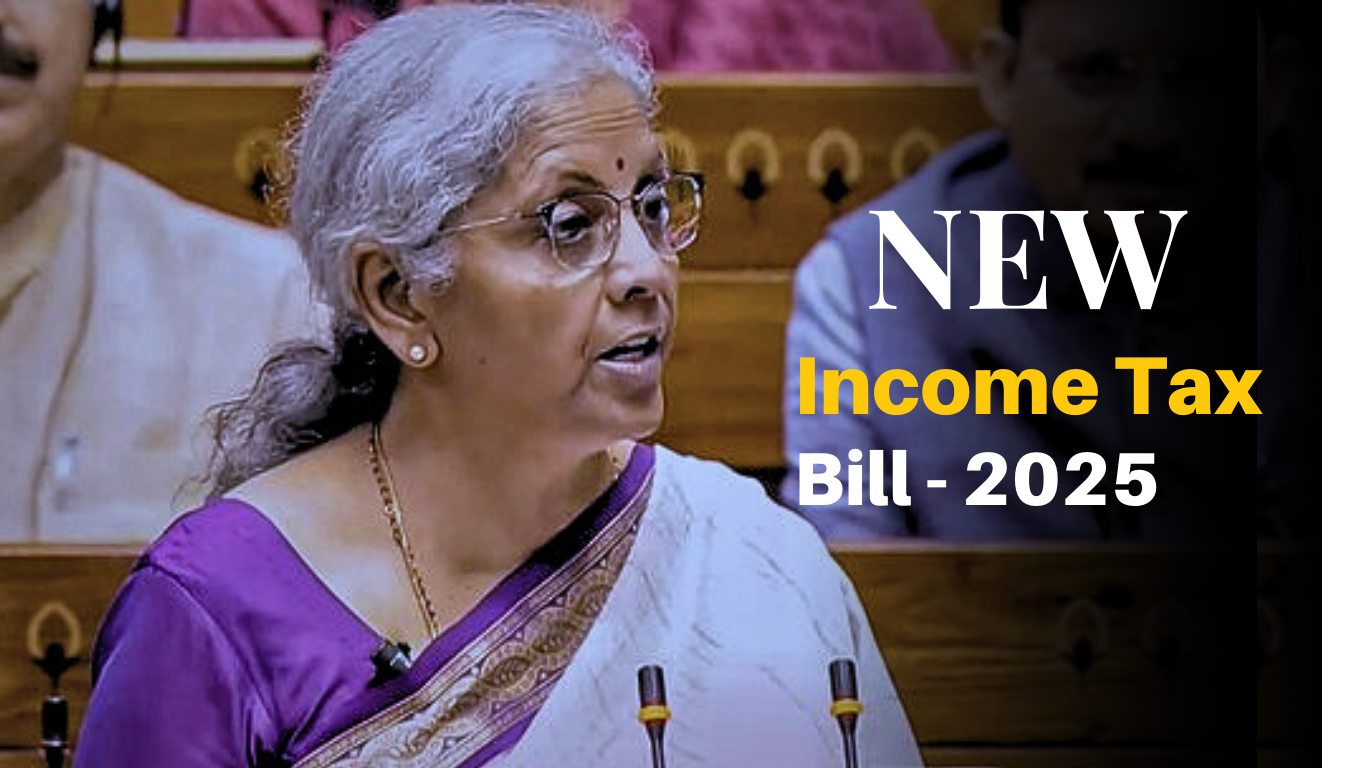The New Income Tax Bill 2025, passed in Parliament, replaces the 1961 Act. Discover why a new law was needed, key changes like the “Tax Year,” digital tax provisions, and concerns over expanded search powers.
Table of Contents
Introduction
The Indian Parliament has officially passed the New Income Tax Bill 2025, replacing the six-decade-old Income Tax Act of 1961. This is being hailed as a historic reform that aims to simplify tax compliance, modernize procedures, and bring greater transparency. At the same time, the Bill has raised concerns over expanded digital search powers that some fear could compromise privacy.
This article explores the latest news, the reasons behind introducing a fresh law, key changes in the Bill, the idea of the “Tax Year,” digital innovations, and the controversies surrounding it.
1. New Income Tax Bill 2025 – Latest Update
The passage of the Income Tax Bill 2025 marks the end of one of the most complex and outdated laws in India’s financial history. The Income Tax Act, 1961 had become too lengthy and filled with countless amendments over the years.
The new Bill streamlines tax provisions, reduces sections, and removes ambiguities. However, its passing without a thorough parliamentary debate has drawn criticism from opposition leaders and tax experts, raising concerns about transparency.
2. Why Was a New Income Tax Law Needed?
The 1961 law had grown into a confusing legal maze, with constant updates, loopholes, and complicated interpretations. It had three major flaws:
- Excessive Complexity: More than 800 sections, countless clauses, and thousands of circulars created confusion for taxpayers.
- Outdated Language: Many provisions were written in legal jargon not suited for today’s digital economy.
- Room for Disputes: Excessive discretion given to tax officers often led to unnecessary litigation and taxpayer harassment.
The government argued that a fresh start was necessary, not just patchwork fixes. A modern economy needed a modern law that was easier for both taxpayers and administrators to follow.
3. Why Was a Second Version of the Bill Introduced?
The first draft of the Bill, introduced in early 2025, faced criticism for being too rigid and impractical in certain areas. A Parliamentary Select Committee was formed, which reviewed the draft and suggested revisions.
The second version of the Bill was therefore introduced with improvements, focusing on:
- Clarity of definitions.
- Simplified tax procedures.
- More taxpayer-friendly provisions.
This shows that the government intended to make the Bill practical, not just ambitious.
4. Key Changes in the New Income Tax Bill 2025
The Bill introduces several landmark changes:
a) Simplified Structure
- Number of sections reduced from 819 to 536.
- Number of chapters reduced from 47 to 23.
- Word count cut almost in half, making it easier to read and interpret.
- Use of tables and formulas for clarity instead of lengthy paragraphs.
b) Tax Relief and Exemptions
- Basic exemption limit: ₹12 lakh.
- Standard deduction: ₹75,000.
- Combined, taxpayers earning up to ₹12.75 lakh annually will not pay any income tax.
- Refunds allowed even for late return filers, providing relief for those who miss deadlines.
c) Corporate Provisions
- Restoration of Nil-TDS certificates for taxpayers with no tax liability.
- Simplification of rules for dividends, house property income, and pensions.
- A 30% standard deduction allowed on house property income.
- Commuted pensions from approved funds will be exempt from tax.
d) Administrative Simplification
- Improved refund process.
- Clear timelines for assessment and appeals.
- Stronger measures to reduce litigation and disputes.
5. The Introduction of the “Tax Year”
Perhaps the most significant conceptual reform in the Bill is the introduction of a “Tax Year.”
Earlier, India followed a Previous Year (when income is earned) and Assessment Year (when income is assessed). This often confused taxpayers and professionals.
From April 1, 2026, India will follow a single Tax Year system, just like most developed countries. This will simplify filing and make India’s tax system more globally aligned.
6. Digital Provisions & Virtual Space
The Bill strongly pushes for a digital-first tax administration system.
Key Highlights:
- Mandatory use of e-notices for assessments.
- Faceless assessment and appeals to reduce personal interaction and corruption.
- Expansion of the definition of “undisclosed income” to include digital assets such as cryptocurrencies, NFTs, and other virtual holdings.
- Tax authorities are empowered to access digital platforms, cloud storage, emails, and even social media accounts if they suspect tax evasion.
This shows that the government is serious about tackling tax evasion in the digital economy era.
7. Concerns Over Expanded Search Powers
While modernization is welcome, one of the most controversial aspects of the new Bill is the expanded powers given to tax officials.
Authorities will now have access to:
- Personal devices such as laptops and mobile phones.
- Email servers and cloud-based accounts.
- Online trading and investment platforms.
- Social media accounts.
Critics argue that without proper safeguards, these powers could lead to harassment, invasion of privacy, and misuse of authority. Experts suggest that clear Standard Operating Procedures (SOPs) must be issued to prevent abuse.
Conclusion
The New Income Tax Bill 2025 is a revolutionary step towards building a simpler, digital, and globally aligned tax system. It provides genuine relief for taxpayers, reduces legal clutter, and ensures greater transparency in the long run.
However, the privacy concerns over expanded digital search powers cannot be ignored. The success of the new law will depend on how well the government balances taxpayer convenience, revenue collection, and individual privacy rights.
From April 1, 2026, India will officially enter a new era of taxation—one that promises clarity but also requires caution.
Stay updated with the latest news and alerts — follow us at racstar.in
Crypto Market Sentiment Cools to Neutral: 5 Critical Trends to Watch Next












